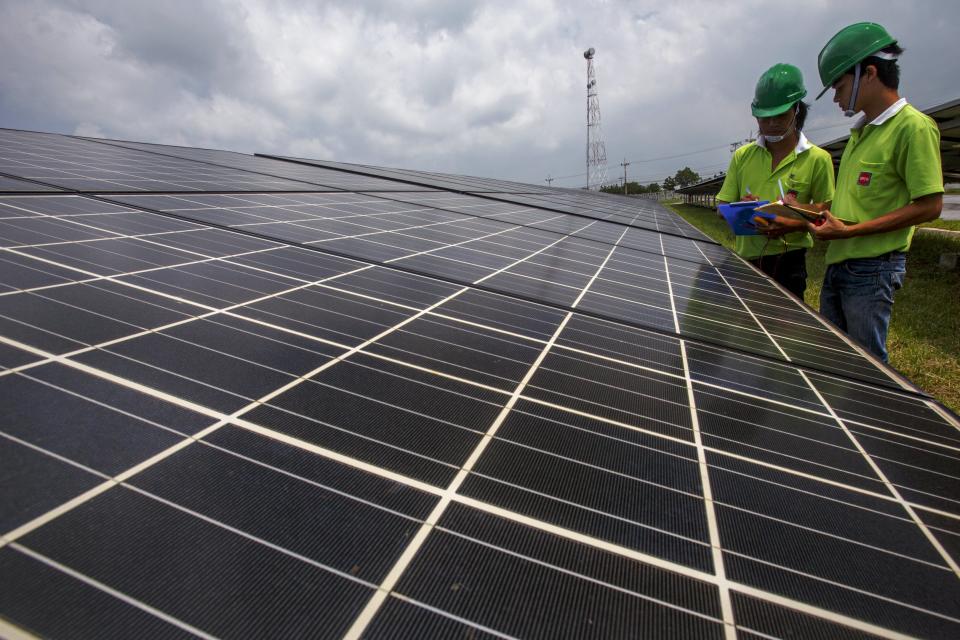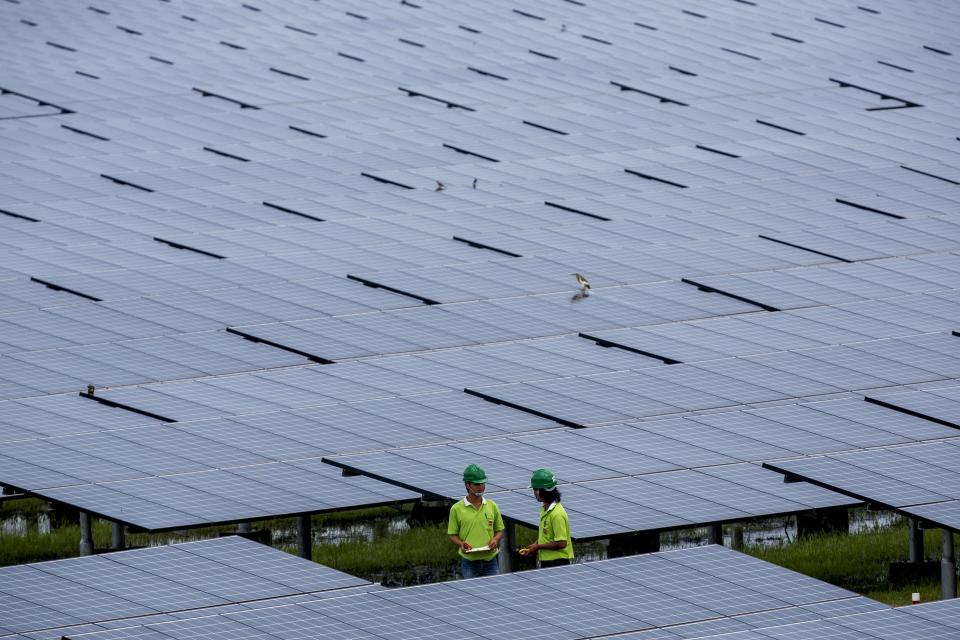365 companies, investors throw weight behind EPA’s Clean Power Plan
Hundreds of companies and investors sent a letter to 29 governors in the U.S. on Friday to show their support for the Clean Power Plan to slash carbon emissions in the electricity sector.
The Environmental Protection Agency's plan establishes pollution standards for existing power plants, for the first time limiting the amount of carbon dioxide they can pump into the air.
General Mills, Nestle, Staples, Adidas and Mars were among the 365 businesses and investors — which ranged from small companies to industry giants — to sign the letter organized by Ceres, a Boston-based sustainability nonprofit.
“Our support is firmly grounded in economic reality. Clean-energy solutions are cost effective and innovative ways to drive investment and reduce greenhouse gas emissions,” the letter reads in part.
Mindy Lubber, the president of Ceres and a founding board member of the organization, said the businesses signed the letter to dispel the myth that any sort of regulation would be bad for the economy.
“It’s not the case. They don’t see it that way. They were quite interested in the EPA rules, and for good reason. They are about making a better economy,” she said in an interview with Yahoo News.
The EPA developed these standards under the Clean Air Act, which requires the agency to regulate the emission of pollutants. It was passed to protect human health and the environment from air pollution.
The Union of Concerned Scientists said power plants account for nearly 40 percent of the nation’s CO2 emissions.
Lubber said climate change is already adversely affecting not only public health but also the economy. Billions of dollars have been lost in the real estate and insurance sectors alone, she said.
“We’re seeing agriculture companies all but shut down a quarter of their farms because of climate-related changes,” Lubber added.
She pointed to the Clean Air Act and the Clean Water Act as examples of reasonable legislation to set a level playing field for businesses and protect them from environmental harm.
Ceres described the letter as “an unprecedented show of business support for tackling climate change.”
The EPA first proposed the Clean Power Plan, a central component to President Obama’s climate change strategy, on June 2, 2014.
“Right now there are no national limits to the amount of carbon pollution that existing plants can pump into the air we breathe, none,” Obama said just days earlier, on May 31, 2014. “We limit the amount of toxic chemicals like mercury, sulfur and arsenic that power plants put in our air and water, but they can dump unlimited amounts of carbon pollution into the air. It’s not smart, it’s not safe and it doesn’t make sense.”
The EPA estimates that the plan would reduce emissions from the electricity sector to 30 percent below 2005 levels by 2030.
It sets state-by-state targets for reducing carbon emissions with flexible outlines for how they could be achieved, such as investment in renewable energy. But states will ultimately be responsible for drafting their plans for reaching the targets laid out by the EPA.
The Energy Information Administration, a nonpartisan branch of the U.S. government, released an economic analysis of the Clean Power Plan offering a range of approaches for state compliance.
It found that wind energy development makes for perhaps the most cost-effective option for reducing carbon emissions and reaching those targets for nearly all of the regions.
The American Wind Energy Association (AWEA), the industry’s trade association, says wind played a dominant role in the analysis because the price of installing windmills has been declining steadily and windmills are essentially pollution-free.
“In their base case for what would be considered their best guess, they found that wind was responsible for almost 50 percent of the most economic compliance with the Clean Power Plan,” Tom Vinson, vice president of federal regulatory affairs at the AWEA, said in an interview with Yahoo News. “One of the reason wind does so well in these economic analyses is that it is so affordable now, with costs coming down nearly 60 percent over the last five years and the ability to lock in a price today for the next 20 years or longer.”
The Solar Energy Industries Association, a trade group for the solar industry, similarly says solar can help states transition off of fossil-fuel-dominant energy portfolios.
The plan has come under fire by the oil and gas industries and some energy-producing states.
Sen. Mitch McConnell, R-Ky., has called for open defiance of the plan, which he called Obama's “attack on the middle class.”
“Think twice before submitting a state plan — which could lock you in to federal enforcement and expose you to lawsuits — when the administration is standing on shaky legal ground and when, without your support, it won't be able to demonstrate the capacity to carry out such political extremism,” he wrote in an op-ed for the Lexington Herald-Leader.
McConnell said the regulations would shrink the economy of his home state by close to $2 billion and destroy countless jobs.
Many expect the start date to be delayed by two years, from 2020 to 2022, in the final plan to give reluctant states more time to comply.






